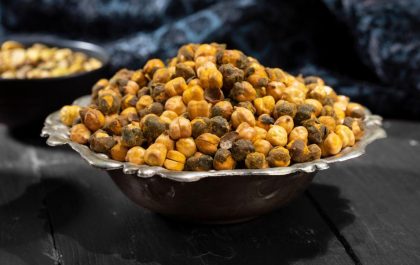SPC flooring is the most rigid waterproof flooring on the market. This state-of-the-art flooring is comfortable, economical, and easy to maintain. It also has a decorative appearance that almost perfectly imitates hardwood or stone. Depending on the configuration chosen, SPC flooring can also be effortless to install. This overview outlines some of the critical benefits of SPC flooring and some helpful installation tips.
The ABCs of SPC Flooring
All engineered vinyl flooring comprises different layers of material, usually four. SPC stands for “stone plastic composite,” either “stone-plastic composite” or “stone-polymer composite,” which refers to the composition of the “core” layer. Made from a natural limestone powder, polyvinyl chloride, and stabilizers, it provides a highly stable base for every floorboard. As a result, you can install SPC flooring over virtually any subfloor in your home, no matter how much back and forth it goes. Here is an overview of the different layers of an SPC floor covering:
- Wear Layer: Transparent and durable, this layer offers resistance to scratches and stains and is easy to clean.
- Vinyl Layer: Colors and patterns are printed onto this vinyl layer to create the finished decorative effect of the flooring.
- SPC middle layer: Dense and waterproof, this intermediate layer provides rigidity and stability to the board.
- Base layer: Usually made from IXPE or CAV/E foam, this layer provides underfoot cushioning and noise isolation.
SPC Flooring Vs. CBP Flooring
CBP stands for “wood-plastic composite.” Both CBP and SPC flooring are known as Rigid Core flooring: they are rugged, waterproof, and presented in a wide range of colors and styles. What makes the difference is the central layer. CBP is made of a hybrid material consisting of plastic and wood or wood flour rather than limestone. What does this mean in terms of performance? CBP is thicker, making it a bit softer underfoot and a bit more sound deadening. SPC is more compact and denser. It is thus more stable and durable and better resistant to shocks.
Advantages Of SPC Flooring
Waterproof
The main advantage of SPC flooring is the utterly waterproof core layer. Therefore, it is suitable for areas of your home prone to the presence of water and humidity, such as laundry rooms, kitchens, and bathrooms.
Appearance
SPC flooring is accessible in a wide range of colors and patterns. Some designs look amazingly like natural hardwood, stone, tile, or other types of flooring. With so many choices, it’s easy to find one that matches any room in your home.
Sustainability
SPC flooring is ideal for busy households with children and pets due to its incredible resistance to impact, stains, scratches, and everyday wear and tear. It also resists direct exposure to sunlight and the fading, peeling, and curling that other flooring materials can experience.
Good Value For Money
The do-it-yourself installation option eliminates the need for a professional contractor. SPC flooring is a little more expensive than standard vinyl flooring but far more economical than hardwood and stone.
Easy Maintenance
Daily maintenance of an SPC floor is relatively minimal. Regular vacuuming, sweeping, and cleaning are usually sufficient.
Easy To Install
Depending on the method used, SPC flooring can be effortless to install. Some plans even eliminate the need for messy adhesives. You can also place SPC planks over many subfloors, even if the floor has bumps, wrinkles, or other imperfections.
Comfort
Although thinner than CBP flooring, SPC flooring is still softer underfoot than many other types of flooring. Different plank thicknesses are available: choose a thicker option for better cushioning. Unlike standard vinyl flooring, the dense core of SPC flooring also dampens footsteps, making the home less noisy.
Types Of SPC Flooring
1. Snap-in SPC Flooring Planks
Snap-on SPC boards are the easiest to install for beginner DIYers. SPC boards have long and short sides to snap together tightly. Just be sure to start in one corner of the room and work your way out. You may need to cut a few extra lengths to get the final layout you want.
2. Glued SPC Flooring Planks
Glued SPC boards require a little more work. Depending on the adhesive, you may want to check the concrete for moisture or use a moisture barrier to prevent damage to the boards. Again, as with snap planks, you need to start in a corner and work outward. Avoid using force, clamps, or straps to tighten the boards, as this could lead to problems with the seams, twisting of the panels, poor adhesion, or misalignment.
3. Permanently Installed SPC Sheet Flooring
This installation method is well suited for new construction projects and high-traffic areas. This installation method involves applying a permanent pressure-sensitive adhesive to an SPC sheet. The glue needs to dry a bit first, and unlike snap-together or glue-down forms, you don’t start in a corner. With this method, you start in the center of the room, using a floor roller to remove trapped air and provide a secure bond.
4. Temporary Install SPC Sheet Flooring
Temporary Install it uses a thin layer of non-permanent adhesive so the sheet can be easily eliminated the next time you decide to change the flooring. Installation is the same as permanent install it.
How to Choose SPC Flooring
Choose the plank size that best suits your style and the room’s decor. You will also choose board thickness and top wear layer thickness. Remember that thicker boards are more durable and stable. The thickness of the panel generally varies from 3.2 to 7 millimeters. A thicker wear layer also offers more protection, with thicknesses ranging from 0.2 to 0.7 millimeters.
Now that you have all the information you need, you’re ready to browse our wide selection of it styles. Keep in mind all the benefits that make it a significant investment and a practical flooring solution for families with pets and children. You can be sure to find a model that suits your style among the many options.
Also Read: How Did Mr Krabs Die? – About, The Case, And More
Related posts
Featured Posts
What Is A Web Project? – Phases For Planning, and More
Introduction Web Project The term ” web project ” can designate different development types, including technical creation, content management, data,…
10 Benefits of Eating Roasted Gram
In this article, we will talk about the 10 benefits of eating roasted gram. The roasted gram is also known…


